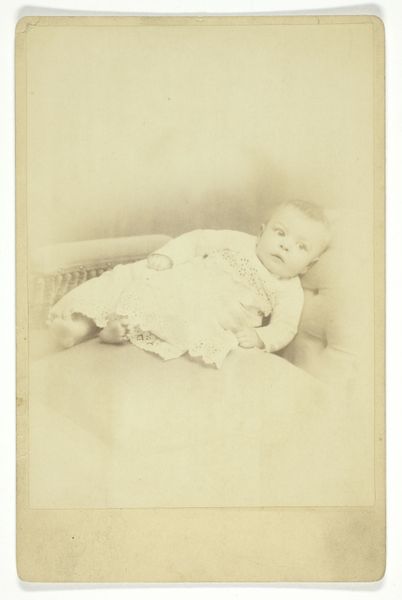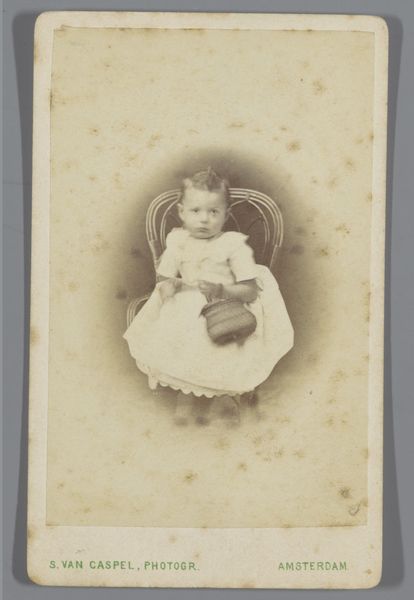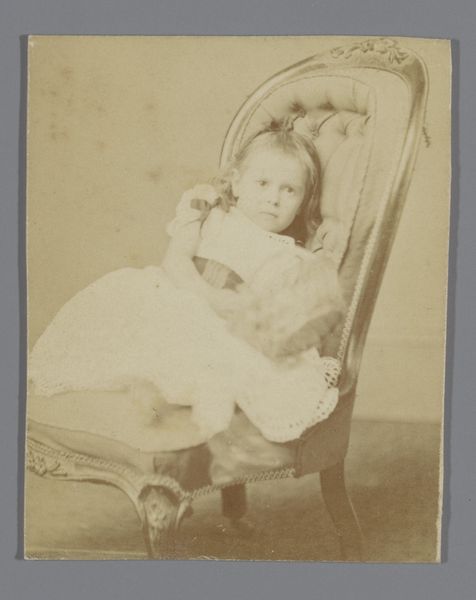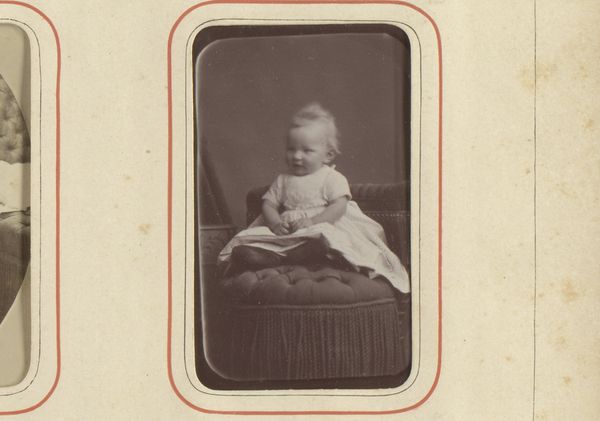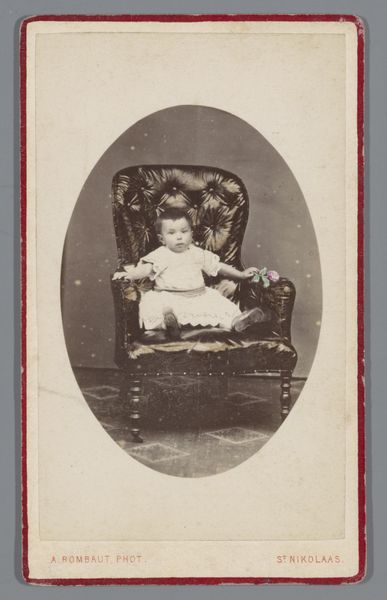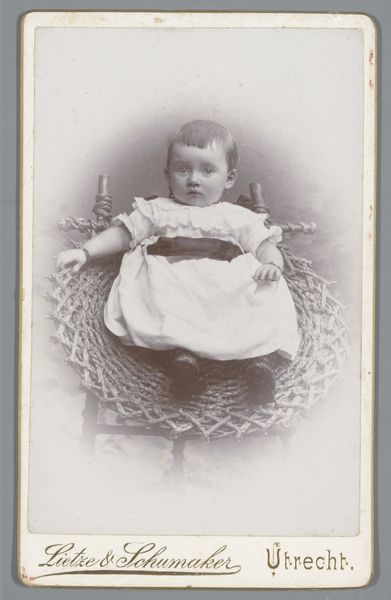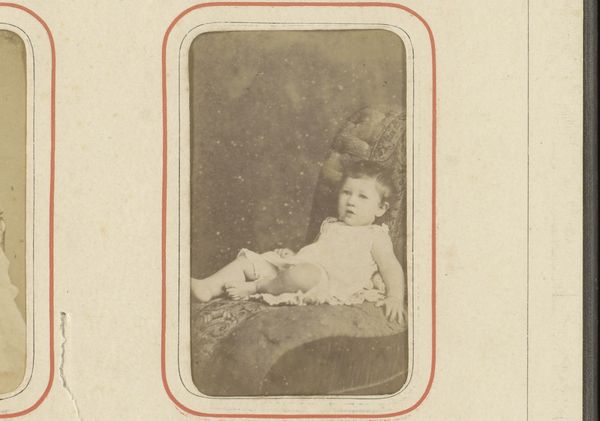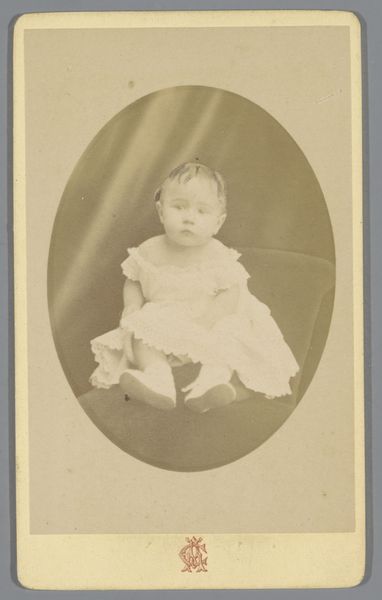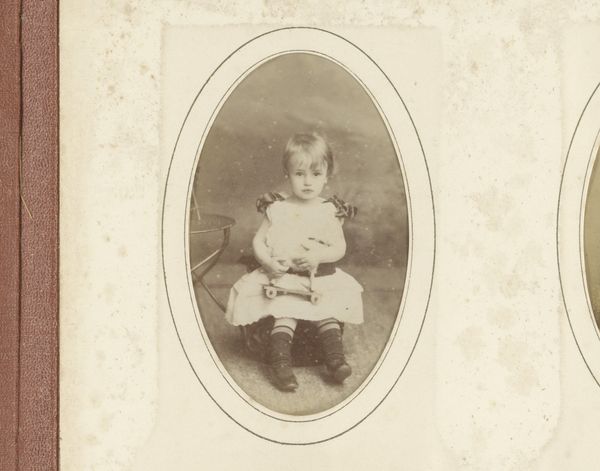
photography
#
portrait
#
16_19th-century
#
photography
#
realism
Dimensions: 15 × 10.1 cm (image); 16.5 × 10.8 cm (card)
Copyright: Public Domain
Curator: Here we have an early photograph from the Art Institute's collection, dating from between 1850 and 1899. The piece, by an anonymous photographer, is called "Untitled (Portrait of Seated Infant)". Editor: It’s incredibly sweet but also a bit unsettling, isn’t it? The pose is so formal for such a young child. There’s something vaguely haunting about it, like a tiny ghost from a bygone era. Curator: Yes, the rigid formality of portraiture in that period is quite striking. Notice how the composition is carefully arranged—the infant centered, supported by the plush, ornate chair. The monochrome tonality and the sitter’s static pose contribute to a sense of detachment. Editor: It feels staged, almost like a miniature adult on a fancy throne. I wonder what the experience of posing for such a thing was like for the baby? Imagine all that light, no wiggle room, all to have their picture taken… almost like being turned into a living doll. Curator: Indeed. Photography in this era demanded patience. Long exposure times required absolute stillness, which undoubtedly influenced the subject’s demeanor. Also consider the elaborate costuming, lace and such materials acting to communicate social standing. This photograph exemplifies Realism in its objective representation. Editor: Oh, I see. So you’re speaking of an intention to capture a truth? Still, I think I love that there's still a way of seeing truth, though a filtered reality to begin with. If art is artifice, that is its purpose, no? Curator: Arguably so. Though, this interplay between representation and reality reveals a broader meditation on how the subject wanted to be memorialized. A specific construction in terms of realism that reveals greater conceptual understanding. Editor: Exactly! All those material considerations help in telling stories of that sitter’s and that era’s experience. Though perhaps filtered through its aesthetics of reality. So maybe this ghost-baby haunts not just because it's from another era, but as something representative of both image and deeper truth, however manipulated. Curator: I find I can’t help but consider this discussion when thinking of Roland Barthes’ reflections in Camera Lucida. That consideration of light and gesture offers so much more than it seems at first glance, Editor: Right, like that phrase "the return of the dead" is embedded. Let's hold that ghostly quality and truth that haunt together from now on, then, shall we?
Comments
No comments
Be the first to comment and join the conversation on the ultimate creative platform.
